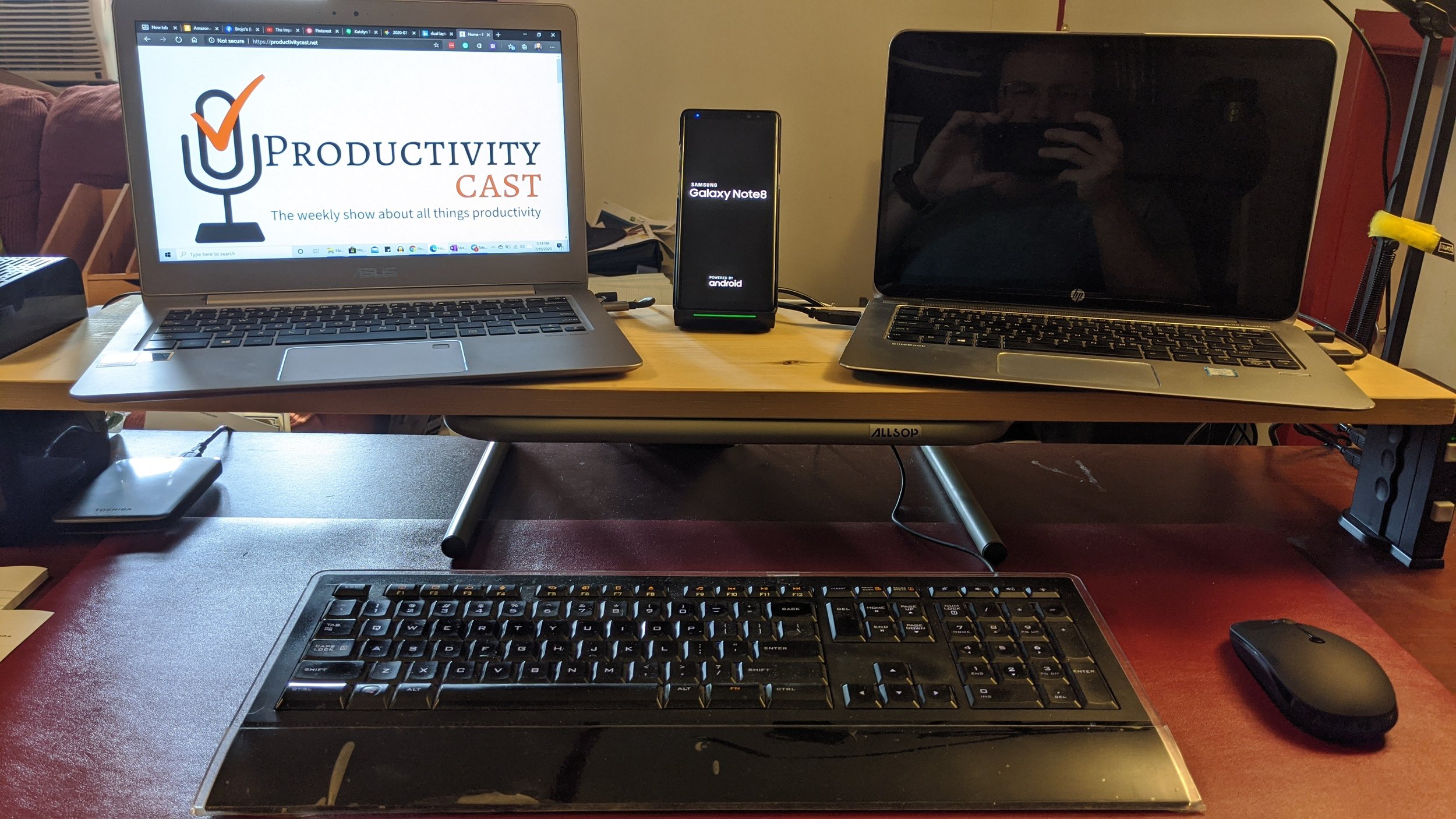When dual screens aren't dual monitors
I've been dealing with a challenge for some time when it comes to my home office. My primary job requires me to use a client's laptop for all connectivity and work. As is understandable that laptop is locked down pretty tight and precludes me from doing things I need to do also such as research and review of content off the client network. In those cases I need access to my personal machine and juggling the two has become a bit of a productivity nightmare.
For a while I was using a setup with the two machines hooked to one display which had some functionality but changing between machines became problematic. I not only needed a way to switch machines but also keep using the same keyboard and mouse. I added a USB switch to solve the keyboard and mouse issue but still wasn't happy with the screen switching process.
It was at this point I referred back to my mantra...simplify. The two laptops had screens already and the only benefit of hooking them to a central monitor is to provide dual-screen displays (something which I can live without the vast majority of the time.) If I could set up a rig to put the two laptop displays at a usable height I also gained the added benefit of placing the webcams at a better angle (something that has become much more important over the past few months.)
A little scrounging revealed a laptop stand I had bought a few years ago that unfortunately was only big enough for one machine. A shelving blank, some self-drilling screws, and a few cup hooks for wire management and I would up with this:

What you can't see from this photo is the boom mic within easy reach for podcasting:

What is most important about this configuration is it now fits the way I work rather than making my work fit the setup. If you're trying to maximize your productivity dedicating time to focus on your workplace is a key piece of the equation. Whether it's a desktop, workshop, office, or lab an organized space that matches the ebb and flow of your work makes all the difference.
We're in a time when setting up workspaces that are not provided by an employer is more the norm than the exception. Evaluate your workspace for not only optimization while you're working but also when you're not. In my case it was important to configure my set up for digital as well as analog (notebooks and pens). Look carefully at the way you work and then make the workspace work for you.
